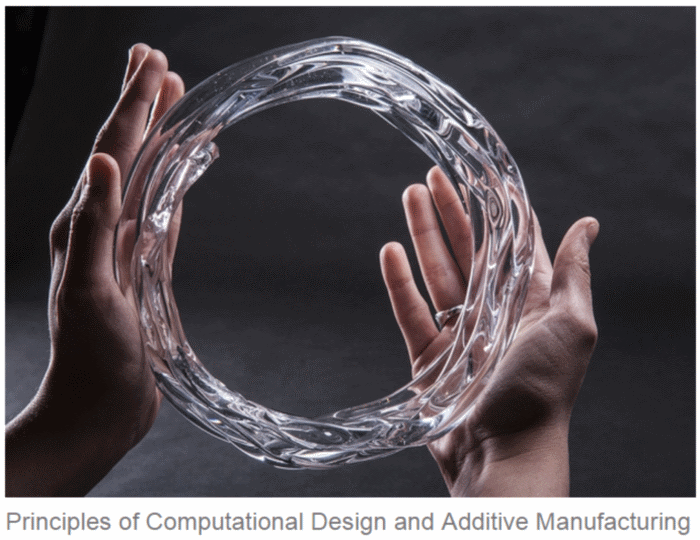Further to a recent collaboration with London’s Royal College of Art (RCA) Exploring Emergent Futures platform with it’s ‘Bench-top Factory’ investigation into the ramifications of desktop manufacturing’s potential, Formlabs has participated in another high profile educational project with the Massachusetts Institute of Technology (MIT).
The MIT Media Lab’s Mediated Matter group were studying the potential of digital modeling as part of their new Principles of Computational Design and Additive Manufacturing class, and in just four weeks this talented group of exceptional graduate students from varying disciplines at MIT and Harvard GSD studied form, forming and formation via 3D printing with intricate and innovative results.
Student Judith Amores’ interesting video was inspirated by the topic of chemical reactions.
Computational Design and Additive Manufacturing from Judith Amores on Vimeo.
To quote the course synopsis: “The MAS.500 Principles of Computational Design and Additive Manufacturing module will explore making through the lens of design, with a specific focus on designing for additive manufacturing. We will familiarize students with CAD software and computational design tools with which to create their own projects throughout the course of the module. Additionally, we will explore computational design and digital fabrication across multiple fields, including architecture, biology, and mechanical engineering. Students enrolled will gain insight into processes of digital and physical form finding and acquire skills that will be applicable across scales and disciplines. Students will be expected to complete a final video project linking the assignments for each session to demonstrate their understanding of the material.”
The sessions included hands-on tutorials in the Mediated Matter Lab space and the direct usage of various different prosumer 3D printers in Fused Deposition Modeling and Stereolithography 3D printing technologies such as the Makerbot Replicator 2 and Formlabs Form 1 machines. Given the speed of the course, as per the session schedule below, the results are on one hand exceptional, and on the other encouraging, as in it is indicative that when approached in the right way, desktop 3D printing and the surrounding skill set required for efficient usage can be learned in a short span of time.
MIT Session Outline:
• (Oct 08) Intro/Course Overview/Documentation, Video, Photography
• (Oct 10) 3D Modeling & Complex Geometries (Rhino + Maya)
• (Oct 15) Additive Manufacturing (Printer Software Tutorials)
• (Oct 17) Parametric Design Systems (Rhino – Grasshopper)
• (Oct 24) Design Scripting
• (Oct 29) Biomolecular Design
• (Oct 31) Rendering/Animation
• (Nov 05) Final Project/Research Review
The range of designs that the group produced were generally orientated around biomolecular design, with a range of visual and technological approaches that are quite distinct from each other as finished pieces. Indeed, some of these models are not a lifetime away from the complex geometric math art that has proved an exceedingly and increasingly popular form of three dimensionally printed sculture retailed by leading designers and artisans such as jewellers.

How long would it take a dedicated, discliplined newcomer to reach the stage of being able to produce designs that are retailable? Educational projects such as that conducted by the MIT Mediated Matter Lab certainly prove worthy of reporting upon, for the potential of motivating the creation of home-based small and medium enterprises and inspiring the artisans of tomorrow with the emergent popular technologies of today.




